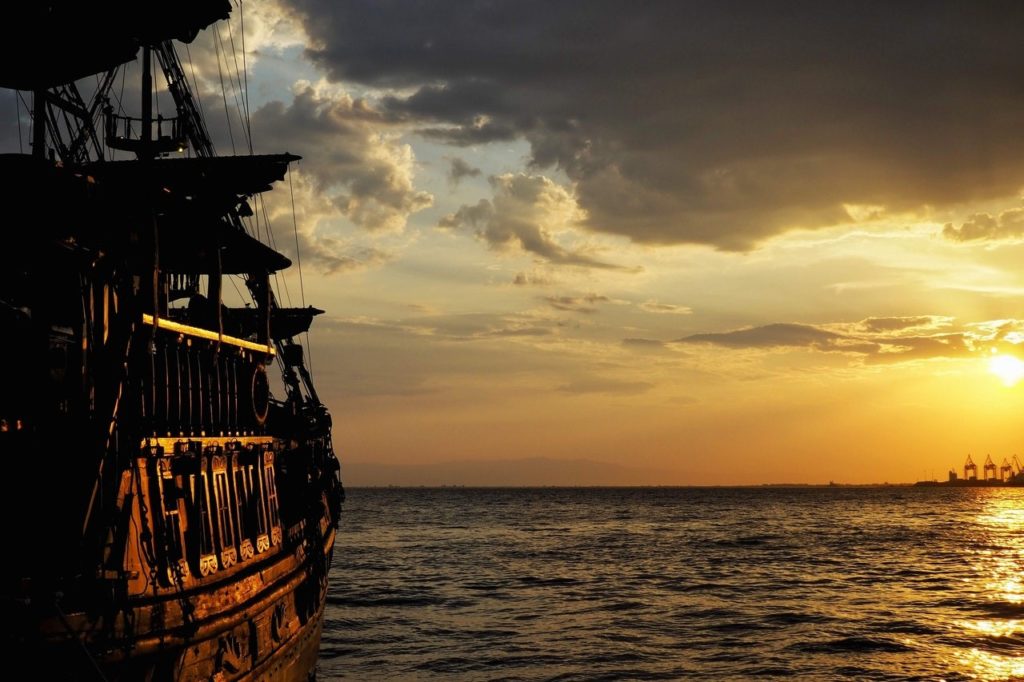
I learned this today. A letter of marque was a license from a government for a private citizen to attack and capture vessels of an enemy nation in order to gain reprisal for that country’s actions in a war.
It was very expensive for a country to have a standing navy and a lot of countries couldn’t afford one. It was a lot cheaper if there was a way for them to employ private citizens as their own personal navy. The letter of marque became a way to do that.
The word “marque” comes from the French, and it meant a pledge to seize something.
The idea of employing private sailors to attack enemy shipping has been around since the Middle Ages. King Henry III of England was the first person to issue commissions for these people in 1243. They were called privateer commissions and they were given to a few people on the condition that they only attacked enemy ships and they split whatever they captured with the crown.
The first recorded use of a “letter of marque” was in 1295. These commissions had been handed out for over 50 years, but this was the first time that the commissions were associated with the idea of “reprisal”. This basically means that the ship had been given permission to seek restitution for wrongs committed upon the nation during the war. This implied that the war was just and the action was just because it was avenging a wrong.
The first time that “letter of marque and reprisal” was written into law was during the time of Edward III, in 1354.
Ships that carried the letter of marque became privateer ships. This is different to pirate ships, but the line could sometimes be very fine. There were two kinds of ships that carried a letter of marque. The first kind were basically merchant ships that captured another vessel purely by chance. They were slow, square-rigged cargo ships that might stumble across another unarmed cargo ship of the enemy nation that they could capture. The second kind were more often called privateer ships and were fast ships that had rigging called fore and aft. This meant it wasn’t perpendicular to the ship, as with a square-rigged ship, and it was far more maneuverable. These ships went out well armed and with far more crew. They were sailing solely to find ships to capture.
Applying for a letter of marque varied from country to country. In Britain, the owner of the ship had to submit an application to the High Court of the Admiralty and they had to leave a deposit of £1,500, which is worth about £150,000 today. This was to make sure that they followed the rules. A privateer was technically a ship of the country’s navy and was expected to follow the rules of war. If captured, they were supposed to be treated as prisoners of war.
A captured ship had to be presented to the Admiralty where its goods would be auctioned off and split between the ship owner, crew, and the crown.
If a privateer without a letter of marque was captured, they would be treated as a pirate and usually executed. This led to forged letters of marque or “flag of convenience” privateers. These were people who shopped around for a letter of marque from a cooperative government. For example, a Captain Luke Ryan commanded six vessels under the flags of three different nations and on opposite sides in the same war. He was trying to get as much bounty as possible.
Sir Frances Drake was a famous privateer. He sailed with a letter of marque from Queen Elizabeth I and captured many Spanish ships towards the end of the 16th century. This made him very rich and certainly helped Queen Elizabeth I, although she always denied legitimizing Drake. His work as a privateer also helped England expand into the Americas.
Letters of marque were issued until 1879. They were issued through the American War of Independence, the Napoleonic Wars, and even the American Civil War. In 1856, the Paris Declaration outlawed privateering in Europe. Most countries ultimately signed up, although the USA didn’t. The USA thought that their small navy put them at a disadvantage with Europe and demanded the right to keep privateers. Bolivia was the last country to issue letters of marque in 1879. They didn’t have a navy and they needed private ships to defend them against Chile. The Hague Peace Conference in 1907 finally outlawed privateering completely and said that any ships that were armed had to be classified as warships. And this is what I learned today.
Photo by Βασίλης Ταραμανλής from Pexels
Sources:
https://www.rmg.co.uk/stories/topics/letters-marque
https://en.wikipedia.org/wiki/Letter_of_marque
https://en.wikipedia.org/wiki/Fore-and-aft_rig
https://en.wikipedia.org/wiki/Square_rig
https://www.law.cornell.edu/wex/letter_of_marque
https://www.britannica.com/story/pirates-privateers-corsairs-buccaneers-whats-the-difference
https://military-history.fandom.com/wiki/Letter_of_marque
